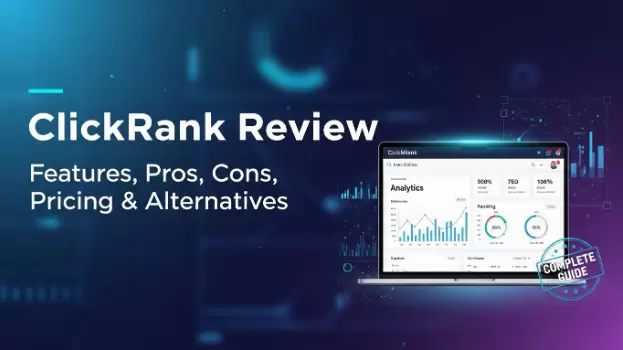Robotic Process Automation is a technology that makes it easy for businesses to build, deploy and manage bots that can replicate humans interacting with digital systems and software. These bots can perform structured and pre-defined tasks such as filling out a form, processing a financial transaction or sending messages.
The core purpose of robotic process automation is to automate mundane and repetitive tasks so that your employees don’t waste their time on those tasks and focus on more value-driven activities with automatic employee monitoring software. Yes, a human first has to define the workflow for a bot for it to work but once done, it can perform most tasks automatically.
Advantages of Robotic Process Automation
Here are some of the advantages of robotic process automation:
- Optimal resource utilization
- Save time
- Reduces cost
- Minimize errors
- Increases business capacity
Disadvantages of Robotic Process Automation
Some of the disadvantages of robotic process automation are:
- Requires monitoring and maintenance
- Not capable to extract information from unstructured datasets
- Can not automate complex tasks
- The time-consuming and costly setup process
In this article, you will learn about seven critical factors you must take into account when choosing robotic process automation tools for your business.
Before discussing factors you should consider when buying robotic process automation tools, it is important to understand that every robotic process automation tool has its own format and does not offer any kind of portability. This means that there are no standards so the one size fits all formula does not apply here.
Make sure that the robotic process automation software you are planning to buy has all the features you need along with some handy extras. Ask for proof of concept before rollout and only buy the software when you are sure that it is the right choice to meet your business needs.
7 Factors To Consider When Buying RPA Tools
Here are seven factors you must consider when buying a robotic process automation software
1. Ease of bot setup
Setting up a robotic process automation software can be a daunting challenge for businesses as it can take a lot of time and resources. That is why it is imperative that enterprises invest in robotic process automation tools that are easy to set up and use.
It must also allow a level of customization and let businesses create custom bots for different buyer personas. Developers should be able to call the robotic process automation tool API when writing code for automation.
2. Low-code capabilities
Gone are the days when only experienced developers could create websites and apps. With the advent of low code tools, anyone can now create an app even with little to no coding knowledge (accounting app, management app, etc.). Low code development lets you drag and drop ready-made components from the tool library and write small code snippets for functions that are not present in the tool library of the tool. Choose robotic process automation tools that offer these low code capabilities.
3. Machine learning capabilities
As mentioned before, robotic process automation software struggles when it comes to extracting actionable insights from unstructured datasets. Since a major chunk of company data is in unstructured form, it makes robotic process automation tools useless.
That is where the machine learning capabilities of these robotic process automation tools come in handy. With these capabilities, it can parse through documents, find information and return it to users. This can enhance the user experience and boost customer loyalty. Some vendors might give this a fancy name but the functionality remains the same.
4. Integration with enterprise applications
Another important factor you can not afford to ignore when buying robotic process automation software is compatibility with enterprise applications. At the end of the day, your robotic process automation software’s utility is highly dependent on how these tools can integrate with your existing business application. This is about your data integration with supermetric alternatives and so on.
Its capability to extract data from your existing business applications matters most. Does your robotic process automation tool offer plugins to seamlessly connect it with your database, accounting systems, HR systems, appointment setting services and ERP systems? If yes, then you should certainly consider it as an option if it fulfills all your requirements.
5. Orchestration and administration
Before these bots can take care of mundane tasks, you will have to first configure them and feed them with the right information as well as a secure credential. This secure credential is usually stored in a credential store. If you want other users to use your bots, you will first have to authorize and authenticate them.
You should also allocate resources for certain bots which trigger when a special event occurs. Once you have set it up, now you have to monitor it so it can work without human involvement. You will have to constantly improve its machine learning capabilities so it does not need human support when performing tasks.
6. Process and task discovery and mining
Identifying business processes you want to automate and prioritizing them is critical for the success of your robotic process automation implementation. Unfortunately, it is also the most time-consuming part of the process as well.
The more your robotic process automation software lets you mine for processes from system log and construct task flows by observations, the easier it will be for you to implement it and automate your business processes. Look for robotic process automation tools that make task discovery and mining painless.
7. Scalability
If you are planning to implement robotic process automation throughout the organization, you will bump into scalability issues. The best way to resolve these scalability issues is to implement them in the cloud, in containers or via virtual machines. If the orchestration component can allocate extra bots when needed, solving the scalability problem is not a problem.
At the end of the day, the success and failure of your robotic process automation rest on identifying the best tasks and processes to be automated. Make sure to document every step involved in the process. Never cut corners in testing cycles because it can lead to some missing links in your robotic process automation systems.
What factors do you consider when selecting a robotic process automation software? Share it with us in the comments section below.


 Table of Content
Table of Content










